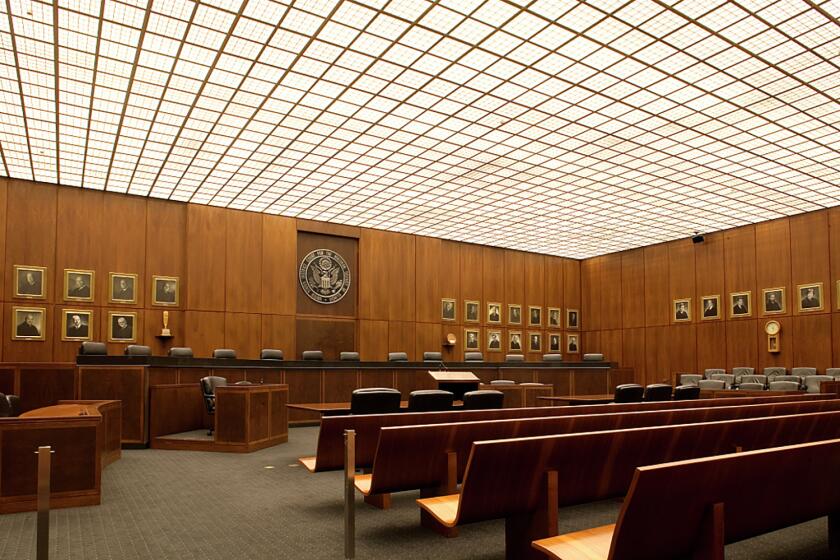Editorial: Appeals court cuts music samplers some slack
Digital technology has made it a snap for musicians to “sample” snippets of audio to use in new works, or even to build entire songs out of samples from other recordings. More than a decade ago, however, a federal appeals court in Nashville ruled that Compton-based rappers N.W.A had violated copyright law by sampling a brief guitar riff on a Funkadelic record without the copyright holder’s permission. The three-judge panel offered a simple rule: “Get a license or do not sample.”
Last week, the 9th Circuit Court of Appeals disagreed, ruling that artists may freely copy a “de minimis” amount of recorded music for use in a new song. It was a welcome return to a long-established copyright-law principle that should lead to more music being created and more sonic innovation.
Copyright law grants creators — e.g., authors, photographers and musicians — exclusive rights over many aspects of their unique creative works until 70 years after their deaths. The point is to give artists an incentive to create more things. Among other things, copyrights allow an artist to control whether all or part of a work can be reproduced or incorporated into a derivative production. Every unique creation, however, is made up of smaller components that shouldn’t be under the artist’s control because they are merely the building blocks for the work — for example, the individual words in a poem or the notes in a song.
The challenge is to draw the right line between building blocks and more consequential assemblages that constitute unique, creative works in their own right. That’s something the courts have long done for many types of work, allowing unauthorized copying of small portions of everything from photographs to musical compositions. But the 6th Circuit Court of Appeals in Nashville decided in 2004 that recorded music shouldn’t be subject to that kind of parsing, and held that reusing even a fraction of a second of recorded sounds constituted a “physical taking” that the law did not allow.
Citing that ruling, the company that holds the copyrights to the song “Ooh I Love It (Love Break)” by the Salsoul Orchestra sued Madonna and producer Shep Pettibone in 2013 for using two short samples from that record in the Madonna song “Vogue.” The samples, each lasting about a quarter of a second, were of a B-flat chord played by a horn section. (Pettibone was the producer on both records.) But a divided 9th Circuit panel rejected the 6th Circuit’s reasoning, saying that nothing in the law suggests that Congress wanted sound recordings to be treated differently than other types of works. Citing Supreme Court precedents, the 9th Circuit insisted that only the “expressive aspects” of a work can be copyrighted, not every fragment thereof.
Just because a band went to the time and expense of recording the various sounds that were mixed into a song, that doesn’t mean each of those elements is eligible to be protected by copyrights. As the 9th Circuit noted, the same is argument could be made against allowing a snippet of any type of work to be copied, and yet the “de minimis” rule has long been broadly applied. Besides, the holders of the “Love Break” copyright didn’t bring suit against Madonna for 20 years because they didn’t recognize that their song had been sampled, which is a good indication of how unrecognizable the sample was.
A number of lower courts had already rejected the 6th Circuit’s approach, so the 9th Circuit’s ruling only makes the split among jurists official — and, eventually, something for Congress or the Supreme Court to resolve. Whichever one does, it should follow the 9th Circuit’s lead.
As appealing as it may be to have a bright-line rule such as “Get a license or do not sample,” that gives copyright holders too much authority over the individual sounds and sonic fragments that make up their works. What constitutes “de minimis” use will ultimately be decided case by case, but there should be breathing room for artists to use short samples in the audio palette from which they create new music. Just as it takes creativity to write music and play it, so can it take creativity to hear in a recording elements of a wholly new sonic expression.
Follow the Opinion section on Twitter @latimesopinion and Facebook
More to Read
A cure for the common opinion
Get thought-provoking perspectives with our weekly newsletter.
You may occasionally receive promotional content from the Los Angeles Times.






